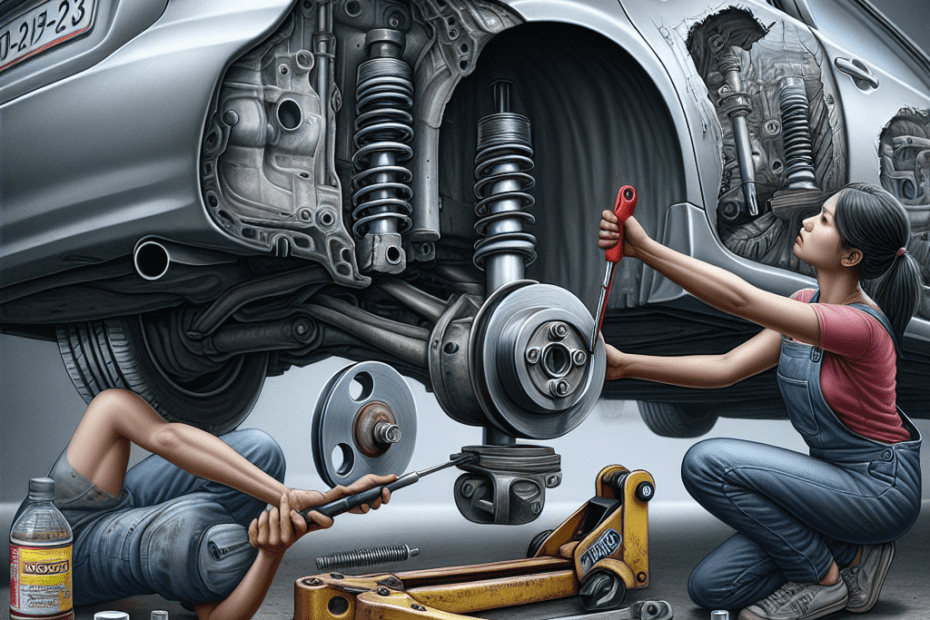“`html
Introduction
Today, many car enthusiasts and DIY mechanics are searching for ways to improve their vehicle’s ride quality by learning how to replace shock mounts. Shock mounts, often overlooked, play a critical role in providing a smooth driving experience. Over time, they can wear out, leading to decreased stability, higher noise levels, and compromised safety. Recognizing the signs of wear and knowing how to replace these components can save both money and ensure peak vehicle performance.
Understanding Shock Mounts
Shock mounts act as a connection point between the shock absorber or strut and the vehicle’s chassis. They help in reducing vibrations and noise. When these mounts are compromised, they can significantly affect the handling and comfort of the drive.
| Signs of Worn Shock Mounts | Effects |
|---|---|
| Noisy ride over bumps | Reduced comfort and possible damage to suspension |
| Poor handling and steering response | Increased risk of accidents |
| Uneven tire wear | Shortened tire lifespan and increased expenses |
Tools and Materials Needed
- Jack and jack stands
- Socket set
- Torque wrench
- New shock mounts
- Penetrating oil
- Protective gloves and eye protection
Step-by-Step Guide to Replace Shock Mounts
Step 1: Safety First
Before starting any repair, ensure the car is parked on a level surface. Use the parking brake and consider placing wheel chocks to prevent any movement.
Step 2: Elevate the Vehicle
Using the jack, carefully lift the car and support it securely with jack stands. Confirm the vehicle’s stability before proceeding.
Step 3: Remove the Tire
Loosen the lug nuts and remove the tire to gain access to the shock absorber and mount. This is a good time to apply penetrating oil to any stubborn bolts.
Step 4: Detach the Shock Absorber
Locate and remove the bolts that connect the shock absorber to the vehicle’s suspension and chassis.
Step 5: Replace the Shock Mount
With the shock absorber removed, unscrew the existing shock mount. Position the new shock mount, ensuring it matches the orientation of the old one. Secure it into place using the appropriate tools.
Step 6: Reattach the Shock Absorber
Place the shock absorber back in its original position and fasten it with the bolts. Use a torque wrench to ensure the bolts are tightened to the manufacturer’s specifications.
Step 7: Reinstall the Tire
Mount the tire back onto the vehicle and tighten the lug nuts. Once all nuts are secure, cautiously lower the vehicle and remove the jack stands.
Step 8: Test the Vehicle
After completing the replacement, take the car for a test drive. Note any changes in the handling or sound to ensure the new mounts are properly installed.
Key Takeaways
- Shock mounts are essential for vehicle stability and comfort.
- Regular inspection of mounts can prevent larger, costly repairs.
- Utilizing the correct tools and procedures ensures a smooth DIY repair.
- Regularly maintaining these components can improve the vehicle’s longevity.
Statistics
An estimated 50% of vehicle owners neglect suspension maintenance, which can lead to increased wear and tear on the suspension system. Furthermore, keeping shock mounts in good condition can reduce overall maintenance costs by up to 20% (Source: Automotive Experts Association, 2022).
FAQ
1. How often should shock mounts be replaced?
Typically, shock mounts should be inspected every 50,000 miles or when a significant change in ride comfort is observed.
2. Can I replace shock mounts myself without professional help?
Yes, with the right tools and a detailed guide, many DIY enthusiasts can replace shock mounts themselves.
3. What are the consequences of driving with worn-out shock mounts?
Driving with worn shock mounts can result in poor vehicle handling, increased tire wear, and higher noise levels.
4. How much does it typically cost to replace shock mounts?
The cost can vary based on the vehicle model, but DIY replacement primarily involves the cost of parts, which can range from $50 to $150 per mount.
5. Can replacing shock mounts improve tire lifespan?
Yes, properly functioning shock mounts help ensure even tire wear, potentially prolonging tire life and reducing expenses.
“`
